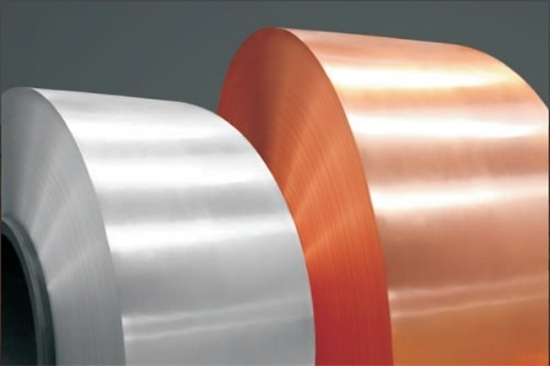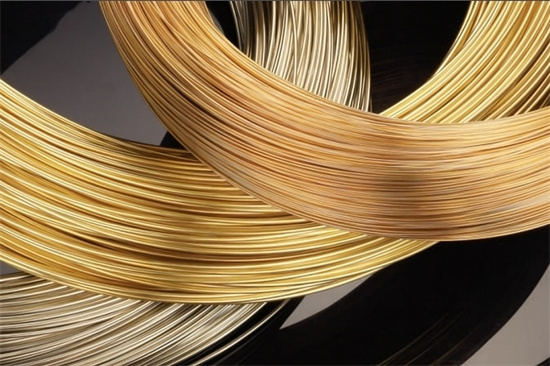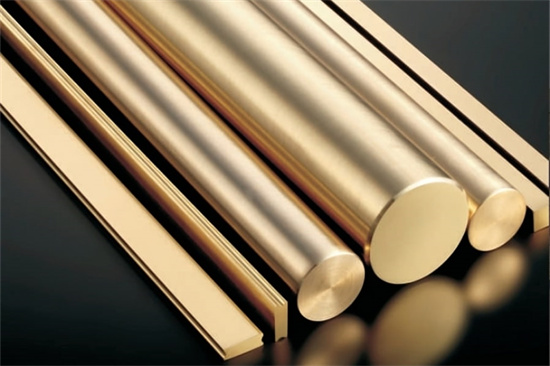


CuAl10Ni5Fe4: The Durable Alloy for Critical Industrial Use
Low MOQ
Provide low minimum order quantity to meet different needs.
OEM & ODM
Provide customized products and design services to meet unique customer needs.
Adequate Stock
Ensure fast order processing and provide reliable and efficient service.
Customer Satisfaction
Provide high quality products with customer satisfaction at the core.
share this article
Table of Contents
When it comes to alloys that can stand up to harsh environments, CuAl10Ni5Fe4 is a name that frequently pops up. This copper-aluminum-nickel-iron alloy, also known as nickel aluminum bronze, is prized for its strength, corrosion resistance, and wear resistance. Whether you’re dealing with marine applications, aerospace engineering, or oil and gas projects, CuAl10Ni5Fe4 is a material that can handle the toughest conditions.
In this guide, we’ll take you through everything you need to know about CuAl10Ni5Fe4—from its composition and mechanical properties to its applications, pricing, and how it compares to other alloys. By the end of this article, you’ll have a clear understanding of why CuAl10Ni5Fe4 is a go-to material in so many industries.
Overview
CuAl10Ni5Fe4 is a nickel aluminum bronze alloy with a typical composition of 10% aluminum, 5% nickel, and 4% iron. These additional elements significantly boost the alloy’s mechanical properties and corrosion resistance, making it suitable for use in extreme environments.
This alloy belongs to the copper alloy family but stands out due to its enhanced durability and resistance to wear, especially in marine applications. The combination of nickel and iron strengthens the alloy’s structure and improves its performance under high loads and abrasive conditions.
Key Features:
- High strength even at elevated temperatures
- Excellent corrosion resistance, particularly in seawater and chloride-rich environments
- Good wear resistance, making it ideal for moving parts like bearings and gears
- Non-sparking properties, making it suitable for hazardous environments
- High fatigue resistance, essential for cyclic loads in machinery
Composition and Properties
The composition of CuAl10Ni5Fe4 plays a crucial role in its mechanical and chemical properties. Each element brings unique characteristics to the alloy, enabling it to perform in a variety of demanding applications.
Composition Breakdown
| Element | Percentage (%) |
|---|---|
| Copper (Cu) | 76 – 82 |
| Aluminum (Al) | 9 – 11 |
| Nickel (Ni) | 4 – 6 |
| Iron (Fe) | 3 – 5 |
| Manganese (Mn) | ≤ 1.5 |
| Silicon (Si) | ≤ 0.1 |
| Zinc (Zn) | ≤ 0.2 |
The combination of nickel and iron enhances the alloy’s strength, while aluminum provides corrosion resistance. The copper base ensures the alloy remains ductile and thermally conductive, which is critical for applications in high-temperature environments.
Mechanical and Physical Properties
| Property | Value |
|---|---|
| Tensile Strength | 700 – 850 MPa |
| Yield Strength | 300 – 400 MPa |
| Elongation | 12 – 18% |
| Hardness (HB) | 160 – 190 HB |
| Density | ~7.6 g/cm³ |
| Thermal Conductivity | 50 – 60 W/m·K |
| Electrical Conductivity | ~7% IACS |
| Melting Point | 1040°C – 1060°C |
| Coefficient of Expansion | 17.5 x 10⁻⁶/°C |
Key Insights on Properties:
- Tensile Strength: With values ranging from 700 MPa to 850 MPa, CuAl10Ni5Fe4 can handle high-stress loads, making it excellent for load-bearing components in marine and heavy machinery applications.
- Corrosion Resistance: The alloy’s aluminum and nickel content make it highly resistant to seawater corrosion, which is why it’s a popular choice for marine propellers and shafts.
- Wear Resistance: The iron content adds toughness and helps the alloy withstand abrasion and friction, which is ideal for bearings and gears in industrial machinery.
Applications
CuAl10Ni5Fe4 is a versatile alloy with a wide range of applications across several industries. Its strength, corrosion resistance, and wear resistance make it a popular choice for marine engineering, aerospace, oil and gas, and heavy machinery.
Common CuAl10Ni5Fe4 Applications by Industry
| Industry | Applications |
|---|---|
| Marine | Propellers, shafts, pump components, valves |
| Aerospace | Landing gear components, bushings, bearings |
| Oil & Gas | Valve bodies, pump parts, connectors |
| Heavy Machinery | Gears, bearings, guide rails, wear plates |
| Automotive | Bushings, engine components, valve guides |
| Construction | Hydraulic cylinder parts, sliding components |
Why CuAl10Ni5Fe4 is Ideal for These Applications
- Marine Environments: CuAl10Ni5Fe4 is designed to withstand the corrosive effects of seawater, making it ideal for propellers, shafts, and other components that are constantly submerged or exposed to marine conditions.
- Aerospace Applications: Its high strength-to-weight ratio and excellent fatigue resistance make it suitable for landing gear, bearings, and other components that undergo cyclic loading.
- Oil & Gas: In environments where corrosion, abrasion, and high pressure are constant challenges, this alloy’s durability and resistance to harsh chemicals make it a perfect fit for valve bodies and pump parts.
Specifications, Sizes, and Standards
CuAl10Ni5Fe4 is available in various sizes, grades, and forms, making it suitable for a wide range of applications. Below are some of the common specifications and standards that govern its use.
Specifications
| Specification | Details |
|---|---|
| Common Forms | Rods, Plates, Bars, Tubes |
| Diameter Range (Rods) | 10 mm to 300 mm |
| Thickness Range (Plates) | 2 mm to 100 mm |
| Length (Bars) | Up to 6 meters |
| Temper | Annealed, Cold-Worked |
| Standards | ASTM B150, DIN 17665, EN 12163 |
Grades
| Grade | Attributes |
|---|---|
| CuAl10Ni5Fe4-Soft (Annealed) | More ductile, easier to machine |
| CuAl10Ni5Fe4-Hard (Cold-Worked) | Increased strength, better wear resistance |
Suppliers and Pricing Information
Finding the right supplier and determining the cost of CuAl10Ni5Fe4 can vary based on the form you need, the quantity, and your location. Below are some common suppliers and general pricing details.
Suppliers and Pricing
| Supplier | Location | Price Range (per kg) | Typical Lead Time |
|---|---|---|---|
| Shanghai Metals | China | $20 – $35 | 2-4 weeks |
| Metal Supermarkets | USA | $25 – $40 | 1-2 weeks |
| EuroAlloys | Europe | €22 – €38 | 3-4 weeks |
| CopperAlloy Solutions | UK | £28 – £45 | 2-3 weeks |
Factors Influencing Pricing
- Form: Plates, rods, and bars may have different pricing depending on their size and processing requirements.
- Grade: Cold-worked grades typically cost more due to the additional processing involved.
- Supplier Location: The cost of shipping, duties, and tariffs can significantly impact the final price.
Advantages and Limitations
Like any material, CuAl10Ni5Fe4 has its strengths and weaknesses. Understanding these can help you decide whether this alloy is the right choice for your application.
Advantages and Limitations
| Advantages | Limitations |
|---|---|
| Excellent corrosion resistance | More expensive than simpler copper alloys |
| High strength and durability | Lower electrical conductivity than pure copper |
| Superior wear resistance | Can be more challenging to machine than softer alloys |
| Good machinability in annealed state | Cold-worked versions may require special tools |
| Non-sparking properties | Heavier than some alternative materials |
Insights on Advantages and Limitations
- CuAl10Ni5Fe4 is a top choice for applications requiring strength, durability, and resistance to corrosion. However, its higher cost compared to simpler copper alloys like brass may be a consideration for budget-conscious projects.
- Its non-sparking properties make it ideal for use in environments where flammability or explosion hazards are a concern, such as in the oil and gas industry.
CuAl10Ni5Fe4 vs. Other Copper Alloys
When selecting a material for your project, it’s essential to compare CuAl10Ni5Fe4 to other copper alloys. How does it stack up against alternatives like CuAl9Ni5Fe4, CuSn12, or CuNi10Fe1Mn? Let’s take a closer look.
Comparison of CuAl10Ni5Fe4 with Other Copper Alloys
| Property | CuAl10Ni5Fe4 | CuAl9Ni5Fe4 | CuSn12 | CuNi10Fe1Mn |
|---|---|---|---|---|
| Tensile Strength | 700 – 850 MPa | 650 – 750 MPa | 400 – 550 MPa | 380 – 550 MPa |
| Yield Strength | 300 – 400 MPa | 280 – 350 MPa | 150 – 250 MPa | 150 – 300 MPa |
| Elongation | 12 – 18% | 15 – 22% | 20 – 30% | 30 – 40% |
| Corrosion Resistance | Excellent | Very Good | Moderate | Excellent |
| Wear Resistance | High | High | Moderate | Moderate |
| Machinability | Good | Good | Good | Poor |
| Non-Sparking | Yes | Yes | No | No |
Key Takeaways from the Comparison
- CuAl10Ni5Fe4 offers a superior combination of strength and corrosion resistance compared to CuSn12 or CuNi10Fe1Mn, making it a better choice for marine and industrial applications.
- Compared to CuAl9Ni5Fe4, CuAl10Ni5Fe4 offers slightly higher tensile strength, which can be beneficial for high-stress applications.
Frequently Asked Questions (FAQ)
Here are some of the most frequently asked questions about CuAl10Ni5Fe4 to help you better understand this versatile alloy.
| Question | Answer |
|---|---|
| What is CuAl10Ni5Fe4 used for? | It’s commonly used in marine, aerospace, oil and gas, and heavy machinery industries for components such as propellers, bearings, and valves. |
| Is CuAl10Ni5Fe4 corrosion resistant? | Yes, it has excellent corrosion resistance, particularly in seawater and chloride-rich environments. |
| How much does CuAl10Ni5Fe4 cost? | Prices typically range from $20 to $45 per kg, depending on the supplier, form, and grade. |
| Can CuAl10Ni5Fe4 be heat treated? | Yes, CuAl10Ni5Fe4 can be annealed for improved machinability or cold-worked for increased strength. |
| What are the key properties of CuAl10Ni5Fe4? | It offers a combination of high strength, good corrosion resistance, and wear resistance, making it ideal for marine and industrial applications. |
| Is CuAl10Ni5Fe4 easy to machine? | Yes, in its annealed state, CuAl10Ni5Fe4 is relatively easy to machine, though cold-worked versions may require special tools. |
Conclusion
CuAl10Ni5Fe4 is a high-performance alloy that combines strength, durability, and corrosion resistance. Its unique composition makes it ideal for use in demanding environments, particularly in marine, aerospace, oil and gas, and industrial machinery applications. Whether you’re looking for a material that can handle high stress, abrasion, or seawater corrosion, CuAl10Ni5Fe4 is a reliable and versatile choice.
While it may come at a higher cost compared to simpler copper alloys, its superior properties make it well worth the investment, especially for applications where performance and longevity are critical. We hope this guide has provided you with a comprehensive understanding of CuAl10Ni5Fe4 and why it’s such a valuable material in numerous industries.
Maybe you want to know more about our products, please contact us
Get Latest Price
About Met3DP
Product Category
HOT SALE
CONTACT US
Any questions? Send us message now! We’ll serve your request with a whole team after receiving your message.

Metal Powders for 3D Printing and Additive Manufacturing
COMPANY
PRODUCT
cONTACT INFO
- Qingdao City, Shandong, China
- [email protected]
- [email protected]
- +86 19116340731








